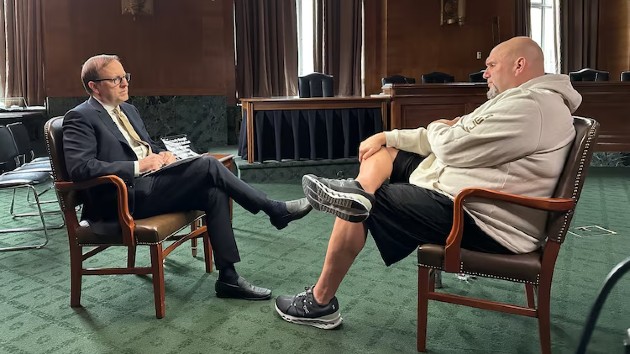“Schoolhouse Rock” helped teach an entire generation of kids about civics with “I’m Just a Bill” and grammar with “Conjunction Junction,” among many other classics.
‘Schoolhouse Rock’ debuted 50 years ago—and shaped a generation
Written by on January 28, 2023
The agency happened to be a client of ABC, and when it came up with “Three Is a Magic Number,” the timing couldn’t have been better to pitch the idea for TV. The network, under pressure from the Federal Communications Commission and parents upset about violent cartoons and incessant ads for sugary cereals, had recently started leaning into more educational programming.
The head of children’s programming at ABC was a young executive named Michael Eisner. He greenlit “Schoolhouse Rock” after hearing “Three Is a Magic Number,” by jazz musician Bob Dorough, and seeing the storyboards for the educational cartoon that accompanied it. That episode would debut in January 1973.
At the time, an advocacy group called Action for Children’s Television was pressuring the TV industry to clean up kids’ programming, Eisner recalled in a recent telephone interview.
“They were a real problem for the three networks, which were doing massive commercialization of children’s programming, violent programming, Saturday morning programming,” said Eisner, who would go on to become chairman and CEO of the Walt Disney Co. “And I walked into this situation and actually had to go to Washington to testify to the FCC.”
In an era when Saturday morning TV was dominated by cereal ads and “wall-to-wall monster cartoons,” in the words of Action for Children’s Television’s founder, the three-minute “Schoolhouse Rock” educational cartoons provided a welcome respite to parents.
A half-century later, it’s their kids — now middle-aged Generation Xers — who treasure the memories of such classics as “Lolly, Lolly, Lolly, Get Your Adverbs Here!”
Eisner said that people in their 40s and 50s bring up “Schoolhouse Rock” in conversation with him more than any other show or film, including blockbuster Paramount Pictures movies such as “Saturday Night Fever” and “Raiders of the Lost Ark,” which were produced when he was president of the studio.
“It’s what they can still sing — which I can, but I won’t,” he quipped.
The series, which ran until the mid-1980s and was revived in the 1990s, won four Emmy Awards.
People magazine wrote in a 2016 profile of Dorough, who would become music director of “Schoolhouse Rock,” “chances are Bob Dorough has had more of an impact on grammar fluency than any other individual in the 20th century.”
Disney, the parent company of ABC, announced this month that ABC will air a “Schoolhouse Rock” 50th-anniversary singalong on Feb. 1, hosted by Ryan Seacrest and featuring Black Eyed Peas, Kal Penn and Shaquille O’Neal.
One day at the McCaffrey & McCall advertising agency, firm President David McCall — the one whose sons couldn’t multiply — was chatting with Creative Director George Newell. According to Newell’s obituary in the New York Times last year, McCall told him that while his boys struggled with math, “they can sing along with Jimi Hendrix and the Rolling Stones.” Newell connected his boss with Dorough, who came up with “Three Is a Magic Number.” An agency art director, Tom Yohe, supplied the animation.
Eisner said the network had already begun launching other educational programming, but he had zero expectations when he agreed to meet with the people who would become the creators of “Schoolhouse Rock.”
“I was doing it as a favor,” he said. “And it just was a matter of putting two and two together, which was hearing something that is kind of hip, like ‘Sesame Street’ was.”
Another participant at that meeting was Chuck Jones, the cartoon animator who had directed “Looney Tunes” and “Merrie Melodies.” According to a 2000 Los Angeles Times obituary of Yohe, who would partner with Newell to produce more than 40 “Schoolhouse Rock” episodes, Jones told Eisner: “Buy it!”
Out of that meeting came a strategy to shave off some commercials and run the series between Saturday morning cartoons.
In “Three Is a Magic Number,” Dorough sings a series of foot-tapping lines to help kids with multiplication tables — along with examples of what makes “3” so special, such as:
The past and the present and the future
The heart and the brain and the body
It takes three wheels to make a vehicle called a tricycle
Dorough, who grew up in rural Arkansas and Texas, leaned into his accent as he pronounced “vee-HICK-ul” and “try-SICK-ul.”
“I just kept searching for an idea that would be far beyond the multiplication table and got the idea that three is the magical number,” Dorough told the Los Angeles Times in 1997.
“Schoolhouse Rock” began with math but branched out to other topics, such as civics, grammar and science. One of the most famous episodes, “I’m Just a Bill,” was written by jazz songwriter Dave Frishberg and sung by jazz trumpeter and vocalist Jack Sheldon. It starts with a congressional bill in human form sitting dejectedly on the Capitol steps, lamenting:
And I’m sitting here on Capitol Hill.
Eventually, he learns that the House and Senate have passed him and the president has signed him into law.
“Oh yes!” the bill exclaims, as confetti falls.
“I’m Just a Bill” has been spoofed many times, including on “The Simpsons,” with the original vocalist, Sheldon, singing the part of a constitutional amendment that would ban flag burning. (The anthropomorphic amendment, less diplomatic than the original bill, declares angrily that “those liberal freaks go too far.”)
Countless kids from that era learned the preamble to the U.S. Constitution from a Schoolhouse Rock episode written and sung by Tony Award-winning lyricist Lynn Ahrens. “It’s worth sitting in front of your TV all morning to catch the one in which the Constitution is set to music,” Carol Rinzler wrote in a 1976 New York Times essay on Saturday morning kids shows.
And, of course, there were the unforgettable grammar tunes, including “Conjunction Junction,” “Lolly, Lolly, Lolly, Get Your Adverbs Here!” and “Unpack Your Adjectives.”
A half-century of staying power
Pete Browngardt, executive producer and director of “Looney Tunes Cartoons” at Warner Bros. Animation, said he recently looked at some “Schoolhouse Rock” storyboards. “They just sell the idea perfectly,” he told The Washington Post. “You could tell that this is an instant sell. It had the art style. It had a great concept. And the songs were fantastic.”
The series has had remarkable staying power in popular culture over the past half-century. Atlantic Records released a 1996 album of artists covering “Schoolhouse Rock” songs, including Blind Mellon’s “Three Is a Magic Number” and Moby’s “Verb: That’s What’s Happening.”
Dorough told The Post in 2013 that he continued to play “Schoolhouse Rock” songs at his jazz gigs.
“I used to play very hip songs, but then one of the waiters — who would be 25 or 30 — would say to me, ‘Your voice sounds familiar,’” said Dorough. After he explained why, the waiter would say, “Oh! Can we have one, please?’”
In the late 1980s, Yohe, the “Schoolhouse Rock” animator, played a video compilation of the show at an education symposium at Dartmouth College, whose students had come of age when the show first aired. He told the New York Times in 1994, “I went up there and showed the films, and the biggest auditorium on campus was filled on a Saturday night. There were 900 kids packed in there, singing along with all the songs.”
Eisner said it’s difficult to know when something will take off the way that “Schoolhouse Rock” did.
“Things become part of the culture, usually by accident; you never can predict it,” he said. “Anything you think is going to become part of the culture probably fails. So I think it’s the message, I think it’s the music, it’s the tune. Why are the Beatles still so popular? Or Neil Diamond? Or Elton John? Or Frank Sinatra? It’s the magic of the creative moment.”






